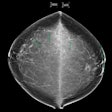
A shorter radiotherapy protocol for treating prostate cancer is comparable to a conventional radiotherapy schedule when it comes to disease-free survival and quality of life after treatment, according to a new study published online February 15 in JAMA Oncology.
The study findings suggest that a hypofractionated radiotherapy protocol -- that is, a shortened schedule of 5.6 weeks compared with a conventional schedule of 8.2 weeks -- can be safely adopted as the practice standard for men with low-risk prostate cancer, wrote a team led by Deborah Bruner, PhD, of Emory University in Atlanta.
"[In this trial,] treatment with hypofractionated radiotherapy was found to be noninferior to conventional radiotherapy in men with low-risk prostate cancer in terms of disease-free survival, with no differences in prostate-specific [measures] and general quality of life, as well as in anxiety and depression," the group wrote.
Men often choose radiotherapy over prostatectomy for localized prostate cancer, but they cite the length of therapy as one of its disadvantages, the authors noted.
"Evidence-based rationale for shorter duration of therapy, as documented in this study, seems in keeping with patient preferences," Bruner and colleagues wrote.
The researchers analyzed data from an NRG Oncology clinical study (RTOG 0415) comparing two radiotherapy treatment schedules for 962 men with low-risk prostate cancer. The men were randomly assigned to a treatment protocol: Those in the first treatment arm underwent radiotherapy at 73.8 Gy in 41 fractions over 8.2 weeks, while those in the second treatment arm underwent a shorter treatment at 70 Gy in 28 fractions over 5.6 weeks.
The team sought patient feedback at baseline, six, 12, 24, and 60 months using a variety of tools, including the Expanded Prostate Index Composite survey for bowel, urinary, sexual, and hormone assessment; the Hopkins Symptom Checklist for measuring anxiety and depression; and the EuroQol-5 Dimension questionnaire for evaluating quality of life.
Bruner and colleagues found no statistically significant differences in baseline characteristics or in any of the quality-of-life measures between the two study arms. They also found that the shorter radiotherapy protocol would translate to a savings of $7,700 per patient.
"Overall savings in medical resource use and in societal and patient medical expense, increased convenience, and decreased time away from work and activities of daily living is clear," the group wrote. "Metrics and incentives for value-based care are increasing, and regimens of hypofractionated radiotherapy align well with this trend."
"These results provide a tipping point of evidence, when added to similar trials, that a hypofractionated treatment schedule should be the standard of care for men with low-risk prostate cancer who choose among all options to be treated with radiotherapy," Bruner said in a statement released by Emory University.




















